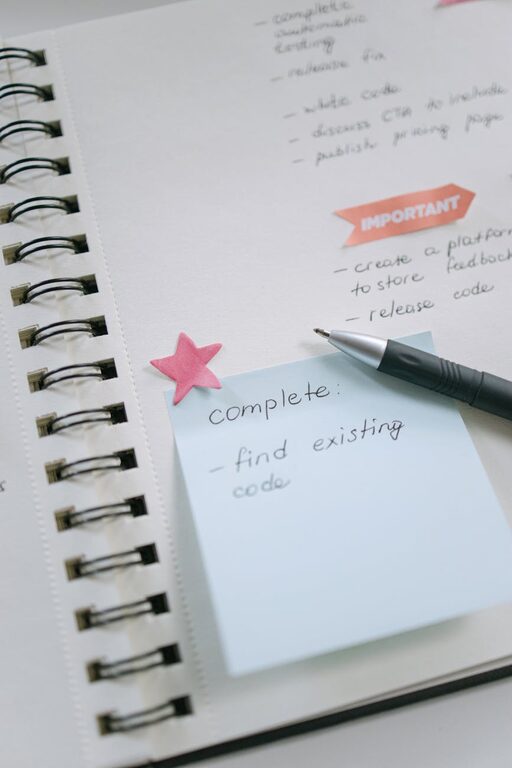
Setting goals is an essential part of staying productive and focused, but setting unrealistic goals can lead to frustration and burnout. By establishing realistic weekly goals, you create a clear path to success that keeps you motivated and on track. In this post, we will explore practical tips on how to set achievable weekly goals that help you make steady progress.
Why Setting Realistic Weekly Goals Matters
Weekly goals serve as manageable checkpoints toward larger objectives, whether they are personal or professional. When goals are realistic:
– You maintain motivation by experiencing small wins.
– You avoid feeling overwhelmed by breaking down tasks into achievable parts.
– You develop consistency, which builds long-term habits.
– You can adjust your plans based on what’s working and what isn’t.
Conversely, setting goals that are too ambitious can lead to discouragement if they aren’t met, reducing your overall drive.
Step 1: Reflect on Your Bigger Picture
Before creating weekly goals, it’s important to understand your broader objectives. Ask yourself:
– What are my long-term or yearly goals?
– Which priorities require immediate attention?
– What progress did I make last week, and what needs improvement?
This reflection helps ensure your weekly goals align with your larger ambitions and provide meaningful progress.
Step 2: Use the SMART Goal Framework
One helpful method for setting realistic goals is to use the SMART criteria. SMART stands for:
– Specific: Define clear, precise goals rather than vague intentions.
– Measurable: Ensure you can track progress and know when the goal is completed.
– Achievable: Set a goal that is reasonable given your current resources and time.
– Relevant: Make sure the goal aligns with your larger plans and values.
– Time-bound: Set a deadline—weekly goals naturally have this built-in.
For example, instead of saying “Exercise more,” a SMART goal would be “Walk for 30 minutes every Monday, Wednesday, and Friday.”
Step 3: Break Down Larger Tasks into Smaller Steps
Big goals can be intimidating, so breaking them into smaller, actionable tasks makes them much more manageable. For instance, if you’re aiming to write a report by the end of the week, you could create these smaller goals:
– Monday: Research topic and gather information.
– Tuesday: Draft the introduction and outline.
– Wednesday: Write the first half of the report.
– Thursday: Complete the second half.
– Friday: Review and edit the draft.
This approach ensures progress each day and prevents last-minute pressure.
Step 4: Prioritize Your Weekly Goals
It’s tempting to create a long to-do list, but prioritizing your goals helps you focus on what truly matters. Consider:
– What tasks will have the biggest impact?
– Which deadlines are approaching?
– What requires immediate attention versus what can wait?
Using priority levels such as high, medium, and low can help you allocate your time more effectively throughout the week.
Step 5: Set a Realistic Number of Goals
Keep your weekly goal list attainable by limiting the number of goals. This will depend on your available time, energy, and other commitments. Too many goals can be overwhelming, leading to decreased productivity.
A good rule of thumb is to select 3 to 5 key goals for the week. This balance challenges you without overload.
Step 6: Schedule Time to Work on Your Goals
A goal without scheduled time is often forgotten. Block out specific times in your calendar to work on your weekly goals, whether it’s morning, afternoon, or evening.
Treat these time blocks as important appointments. This practice helps build routine and accountability.
Step 7: Review and Adjust Weekly
At the end of the week, take a few minutes to review your progress. Ask yourself:
– Which goals did I complete?
– What obstacles did I face?
– What can I improve next week?
Use this insight to adjust your approach and set even better goals for the following week.
Additional Tips for Success
– Be flexible: Unexpected events happen. Don’t be afraid to revise goals based on new circumstances.
– Celebrate achievements: Recognize your progress, no matter how small. This boosts morale.
– Use goal-tracking tools: Apps, planners, or simple checklists can help you stay organized.
– Limit distractions: Create an environment that supports focus to meet your goals efficiently.
– Stay positive: A constructive mindset helps overcome challenges and keeps motivation high.
Final Thoughts
Setting realistic weekly goals is a straightforward but powerful strategy for improving productivity and reaching your long-term objectives. By clarifying your priorities, breaking tasks down, and reviewing progress, you create a sustainable rhythm that leads to consistent achievement.
Start small this week—choose a few meaningful goals, commit your time, and watch your productivity grow!
